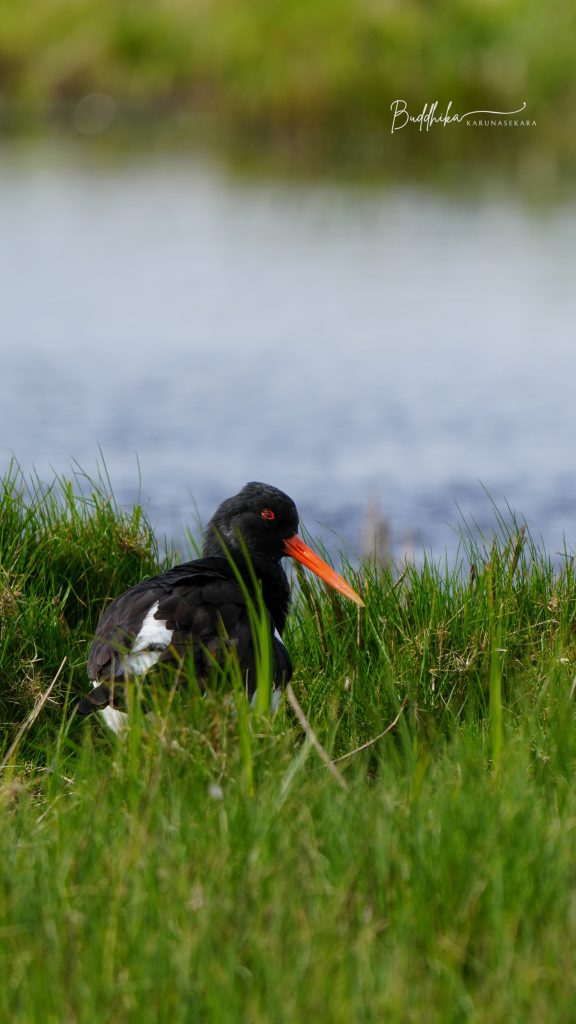
As you stroll along a windswept beach, you might spot a distinctive black and white bird with a bright orange beak probing the sand. This is the Oystercatcher, a bird that has not only adapted perfectly to coastal life but has also woven its way into the folklore of many seaside communities.
In Scottish folklore, Oystercatchers are known as “Sea Pies” or “Mussel Pickers”. There’s a charming tale that explains their distinctive colouring. According to the legend, when God painted the birds, he finished the Oystercatcher in pure white. However, the mischievous bird kept playing in the black paint pot, resulting in its current pied appearance. This story explains the bird’s colouring and attributes to it a playful, almost trickster-like nature.
The Shetland Islanders have their own beliefs about Oystercatchers. In the Shetland Islands, these birds are called “Shalder” and are considered lucky. Folklore suggests that seeing an Oystercatcher is a sign of good fortune, particularly for fishermen setting out to sea. Some old tales even claim that Oystercatchers have the ability to predict the weather, with their calls becoming more frequent before an approaching storm.
In Welsh mythology, Oystercatchers play a role in the ancient legend of Rhiannon. In some versions of the story, when Rhiannon is falsely accused of killing her son, it is an Oystercatcher that helps prove her innocence by leading searchers to the child who had been kidnapped by a monster.
Native American tribes along the Pacific Coast also have stories featuring Oystercatchers. In some traditions, these birds are seen as clever and resourceful. One tale tells of how the Oystercatcher outsmarted the Eagle in a contest of wits, using its knowledge of the tides to win a challenge. This story reflects the bird’s actual behaviour, as Oystercatchers are indeed experts at timing their foraging with the tides.
In Japanese culture, the Oystercatcher, known as “Miyakodori”, is often associated with fidelity and longing. There’s a famous poem in the Man’yōshū, Japan’s oldest poetry anthology, that uses the image of the Oystercatcher to symbolise a lover’s yearning. The bird’s habit of running along the shoreline is likened to a person pacing anxiously while waiting for their beloved.
Even in modern times, Oystercatchers continue to inspire local legends and superstitions. In some coastal areas of Britain, it’s considered good luck to see an Oystercatcher flying inland, as this is thought to predict fair weather. Conversely, seeing one flying out to sea is sometimes taken as a warning of approaching storms.
These folktales and beliefs, while varied, share common threads. They often highlight the Oystercatcher’s intelligence, its connection to the tides and weather, and its striking appearance. They reflect how closely humans have observed these birds and how we’ve woven their behaviours into our stories and beliefs.
